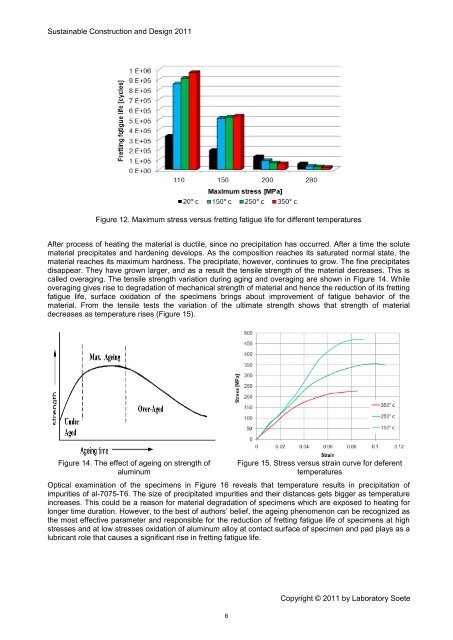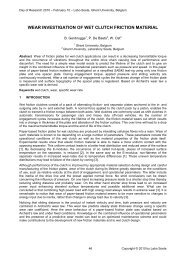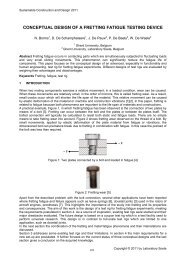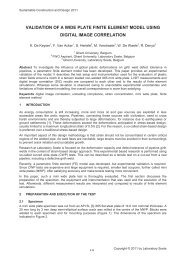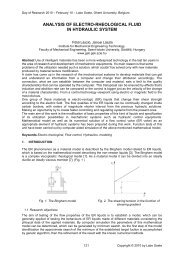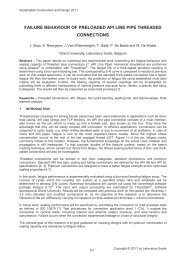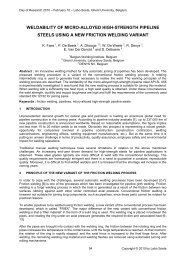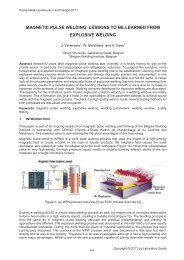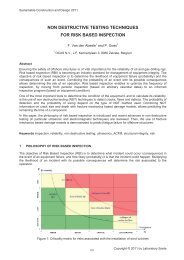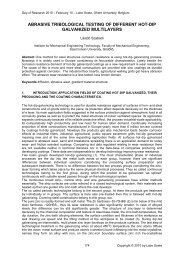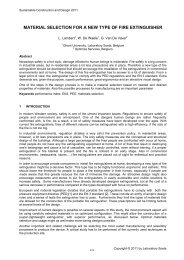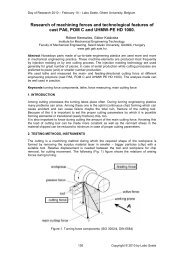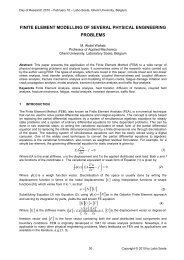Volume 2, Issue 1, 2011, Full Text - 5th International Conference on ...
Volume 2, Issue 1, 2011, Full Text - 5th International Conference on ...
Volume 2, Issue 1, 2011, Full Text - 5th International Conference on ...
Create successful ePaper yourself
Turn your PDF publications into a flip-book with our unique Google optimized e-Paper software.
Sustainable C<strong>on</strong>structi<strong>on</strong> and Design <str<strong>on</strong>g>2011</str<strong>on</strong>g><br />
Figure 12. Maximum stress versus fretting fatigue life for different temperatures<br />
After process of heating the material is ductile, since no precipitati<strong>on</strong> has occurred. After a time the solute<br />
material precipitates and hardening develops. As the compositi<strong>on</strong> reaches its saturated normal state, the<br />
material reaches its maximum hardness. The precipitate, however, c<strong>on</strong>tinues to grow. The fine precipitates<br />
disappear. They have grown larger, and as a result the tensile strength of the material decreases. This is<br />
called overaging. The tensile strength variati<strong>on</strong> during aging and overaging are shown in Figure 14. While<br />
overaging gives rise to degradati<strong>on</strong> of mechanical strength of material and hence the reducti<strong>on</strong> of its fretting<br />
fatigue life, surface oxidati<strong>on</strong> of the specimens brings about improvement of fatigue behavior of the<br />
material. From the tensile tests the variati<strong>on</strong> of the ultimate strength shows that strength of material<br />
decreases as temperature rises (Figure 15).<br />
Figure 14. The effect of ageing <strong>on</strong> strength of<br />
aluminum<br />
Figure 15. Stress versus strain curve for deferent<br />
temperatures<br />
Optical examinati<strong>on</strong> of the specimens in Figure 16 reveals that temperature results in precipitati<strong>on</strong> of<br />
impurities of al-7075-T6. The size of precipitated impurities and their distances gets bigger as temperature<br />
increases. This could be a reas<strong>on</strong> for material degradati<strong>on</strong> of specimens which are exposed to heating for<br />
l<strong>on</strong>ger time durati<strong>on</strong>. However, to the best of authors’ belief, the ageing phenomen<strong>on</strong> can be recognized as<br />
the most effective parameter and resp<strong>on</strong>sible for the reducti<strong>on</strong> of fretting fatigue life of specimens at high<br />
stresses and at low stresses oxidati<strong>on</strong> of aluminum alloy at c<strong>on</strong>tact surface of specimen and pad plays as a<br />
lubricant role that causes a significant rise in fretting fatigue life.<br />
Copyright © <str<strong>on</strong>g>2011</str<strong>on</strong>g> by Laboratory Soete<br />
6


